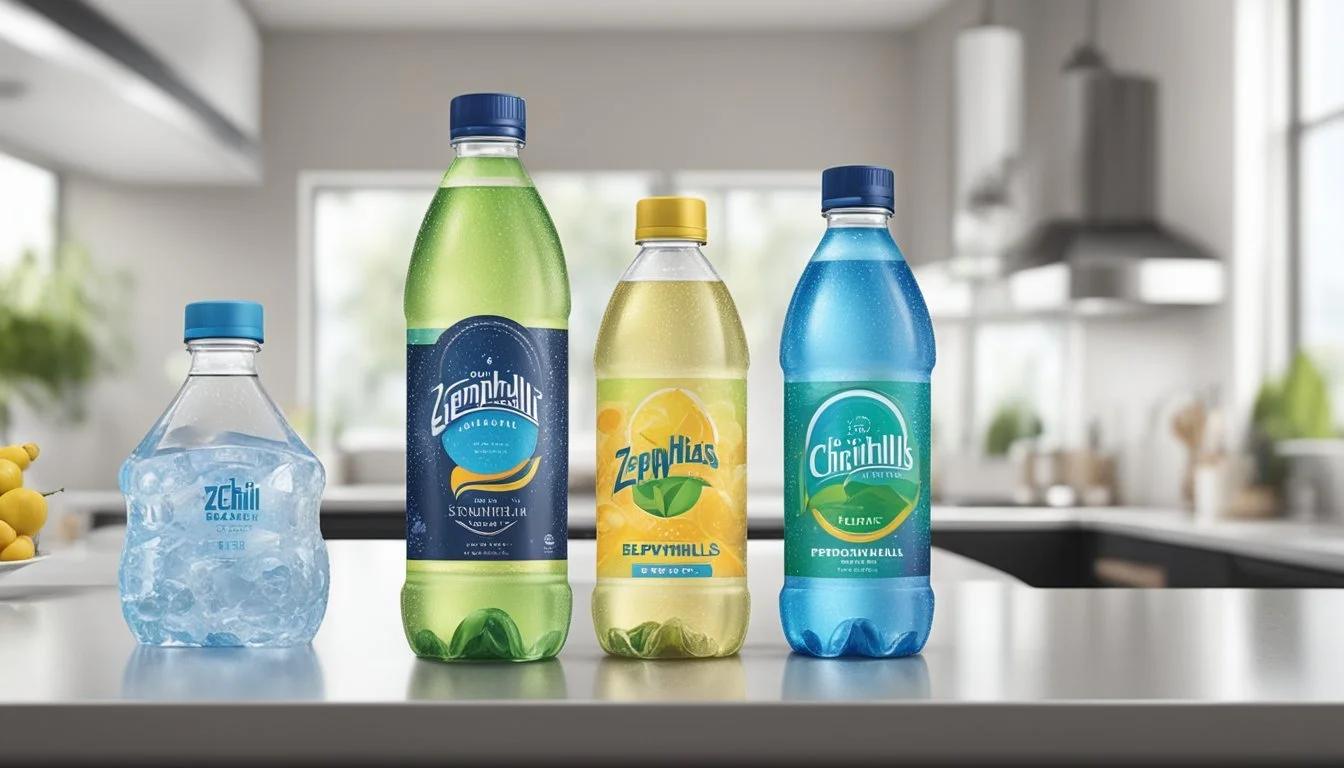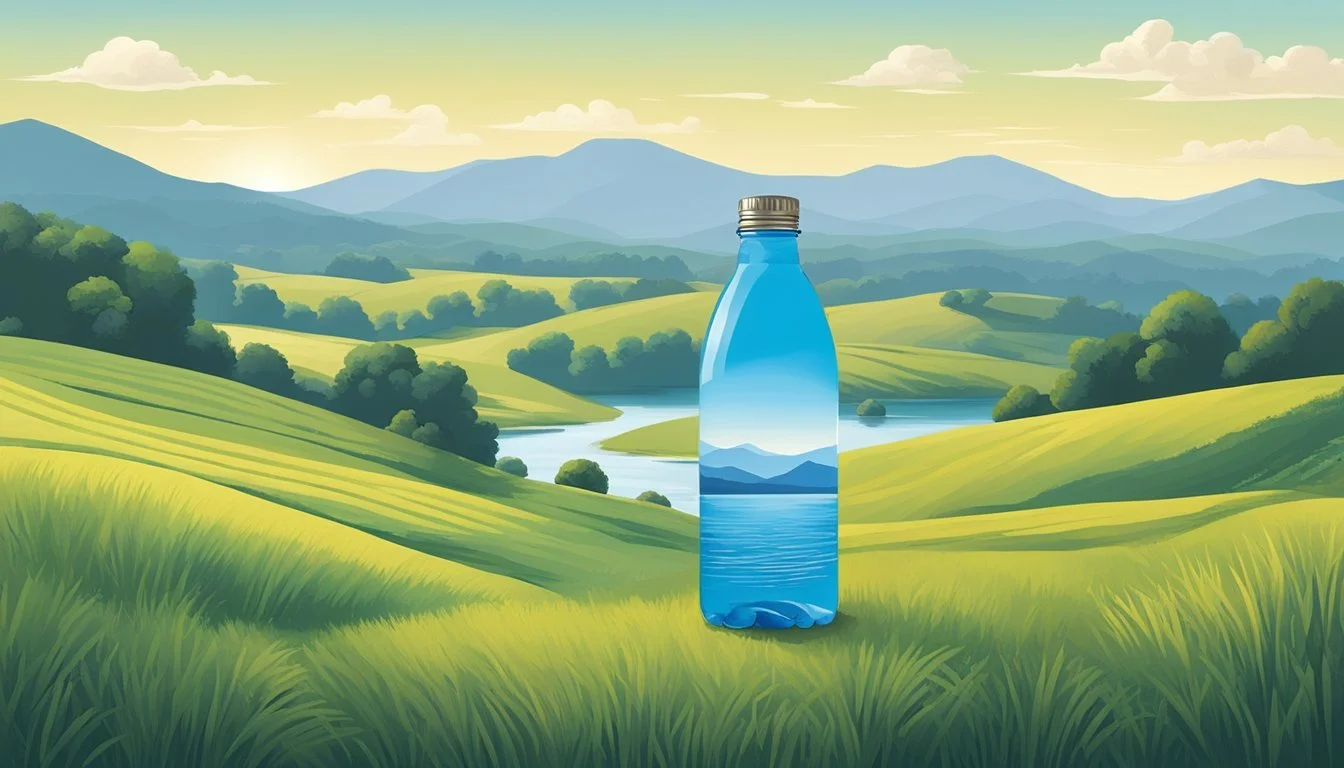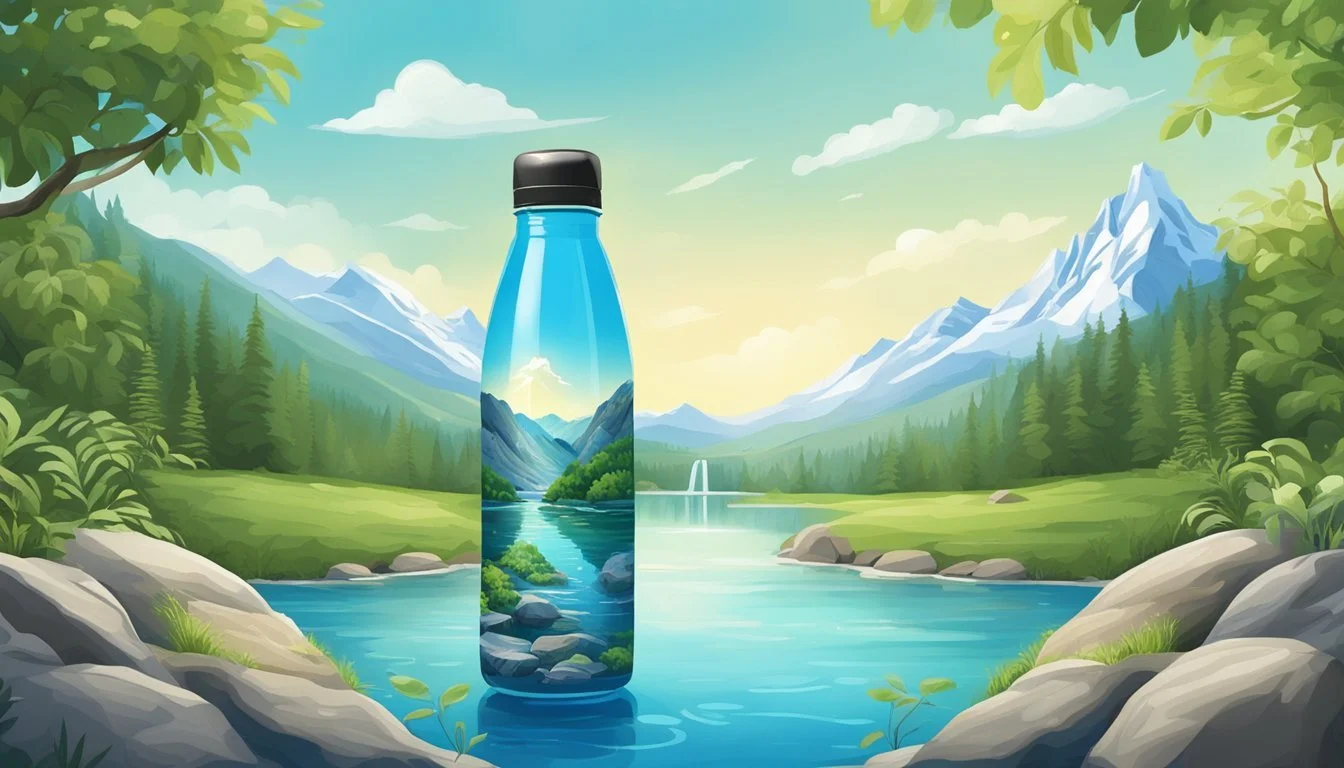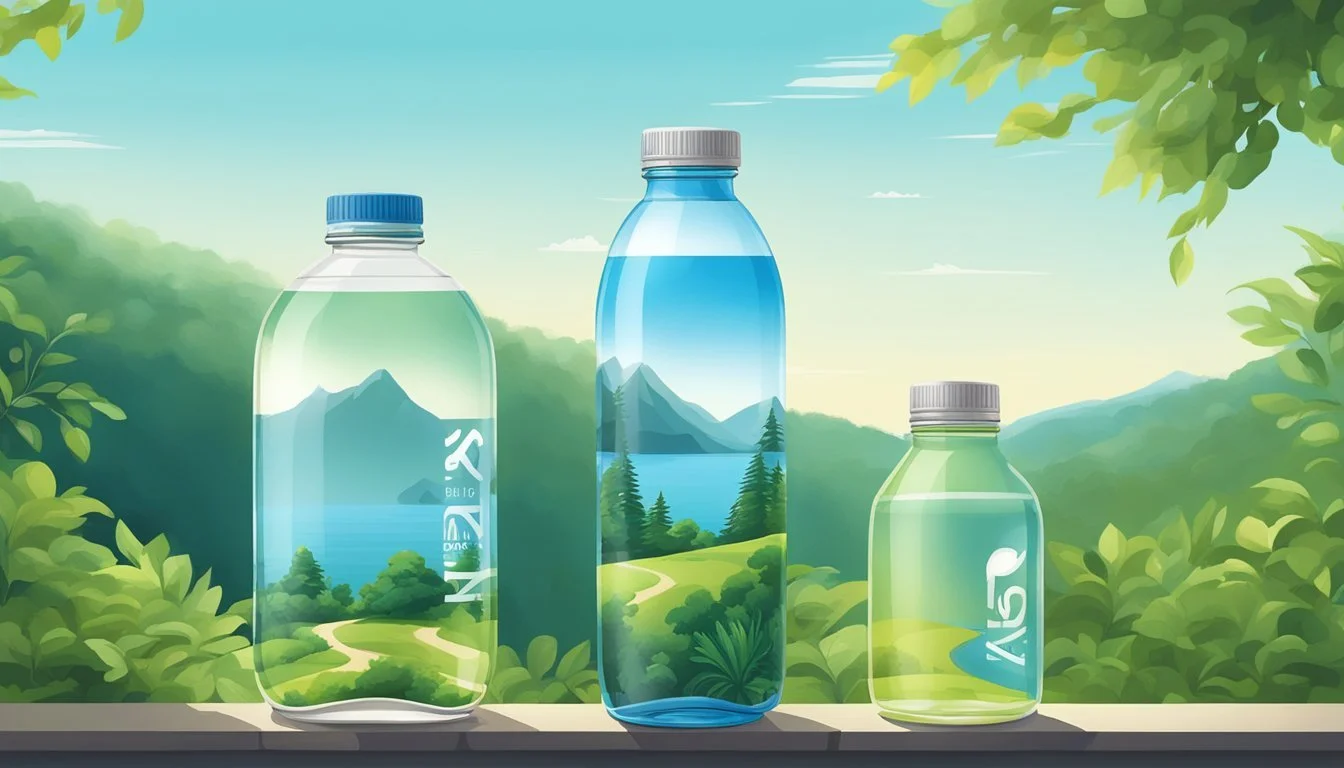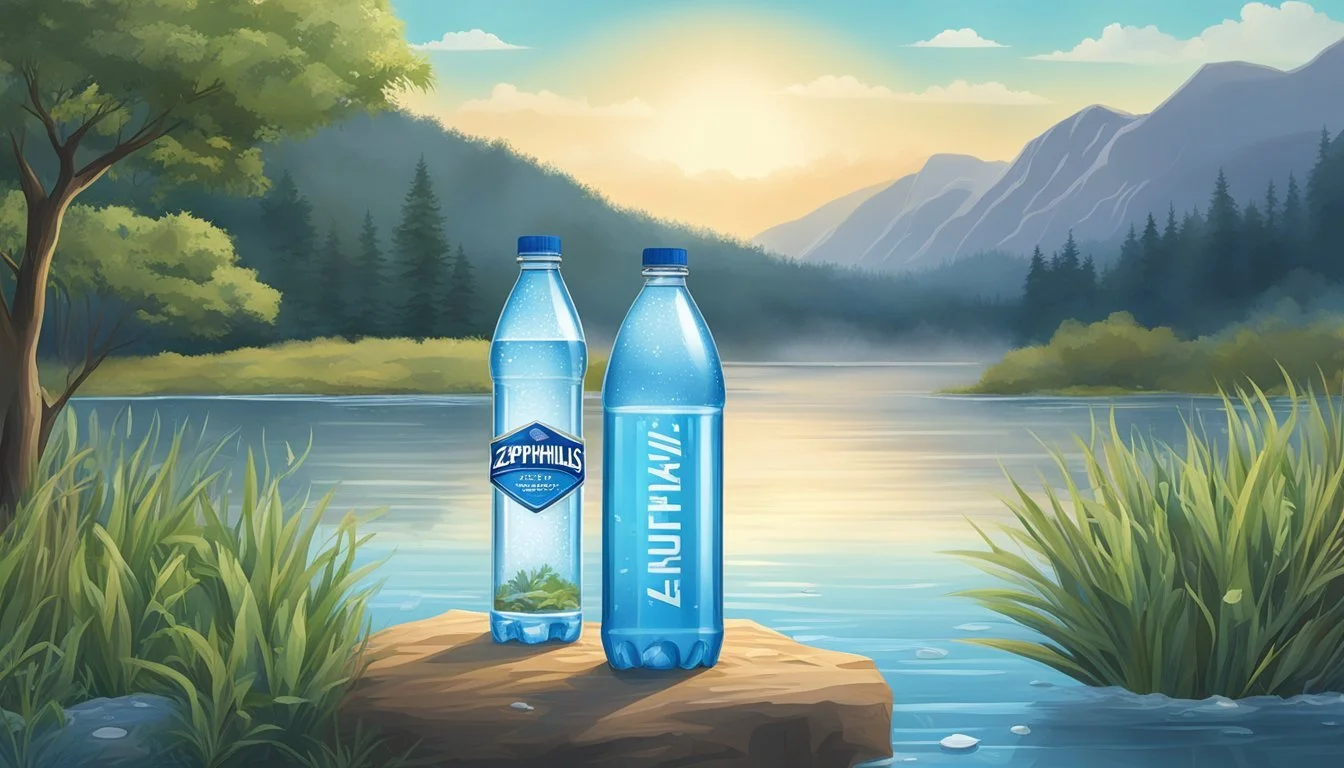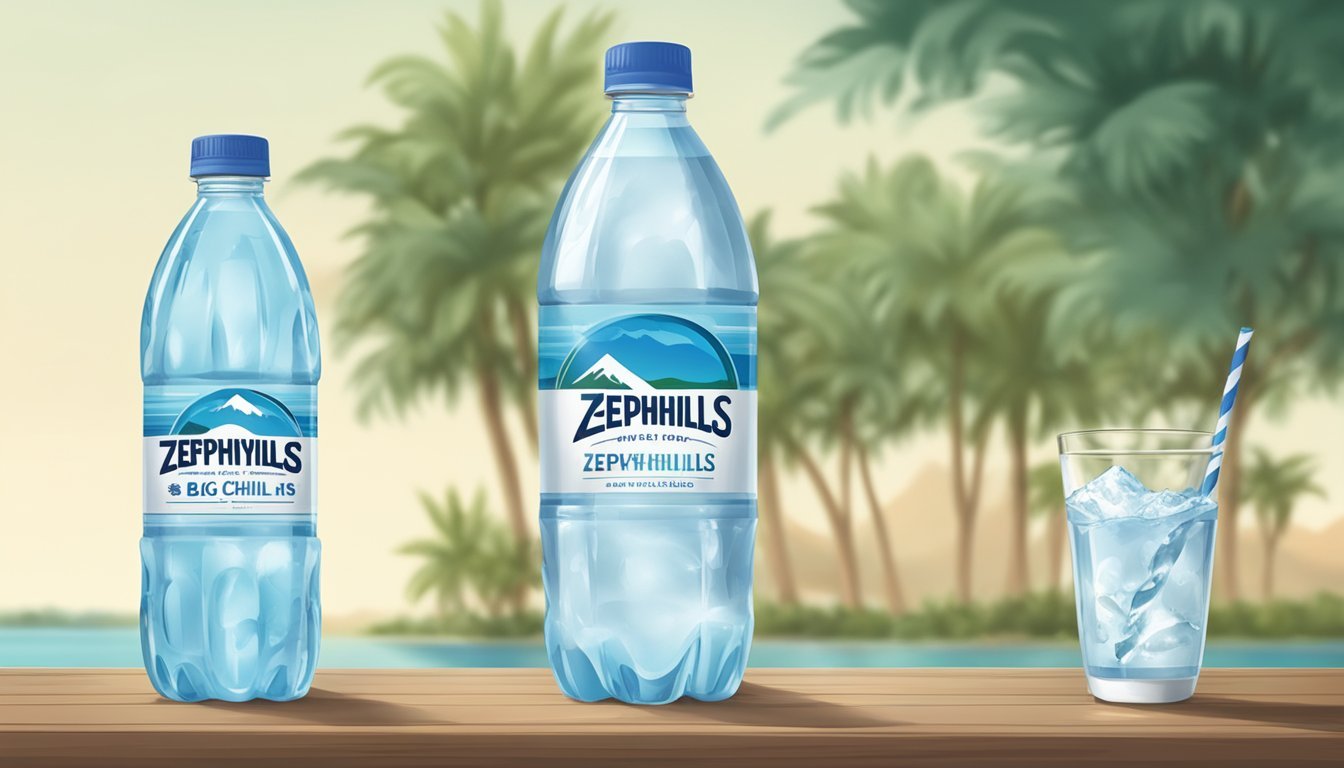Zephyrhills vs. Big Chill
The Ultimate Bottled Water Showdown
Choosing the right bottled water can be a game-changer for daily hydration, especially when faced with options like Zephyrhills and Big Chill. Consumers often look for quality and taste when deciding which brand to trust. Zephyrhills, known for its natural spring water, presents a balanced mineral content that appeals to many health-conscious individuals. Big Chill, on the other hand, offers a refreshing simplicity, making it a favorite for those who prefer a more neutral taste.
Zephyrhills sources its water from natural springs, ensuring a clean, crisp sip every time. This brand's rigorous purification process maintains essential minerals like calcium and magnesium, which can enhance the water’s taste and potential health benefits. Big Chill distinguishes itself by providing a straightforward, pure drinking experience without any overwhelming flavors. Its affordability and accessibility make it a go-to choice for many consumers.
When comparing Zephyrhills and Big Chill, personal taste plays a significant role. Zephyrhills offers a slightly mineralized profile, which may be more appealing to some, whereas Big Chill’s straightforward approach suits those who prefer a simpler, less pronounced flavor. Knowing the differences in quality and taste between these two brands can help consumers make an informed decision for their hydration needs.
Background on Bottled Water
Bottled water has become a staple in daily hydration routines for many people. Its convenience and accessibility make it a popular choice. Several brands have emerged over the years, offering a variety of options that cater to different preferences and needs.
Evian and Fiji are known for their premium quality. Evian is sourced from the French Alps, whereas Fiji comes from natural artesian wells in Fiji. Both brands emphasize purity and mineral content.
Dasani and Aquafina are two of the most recognizable names in the market. Both brands are owned by major beverage companies and are widely available. Dasani is produced by Coca-Cola, while Aquafina is a product of PepsiCo.
Smartwater, marketed for its vapor-distilled purity, often includes added electrolytes for taste. It appeals to those looking for enhanced hydration. Core Hydration also targets health-conscious consumers with its balanced pH and added minerals.
Voss is distinguished by its sleek, cylindrical bottle and its purity, sourced from an underground aquifer in Norway. It is often associated with luxury and exclusivity.
Consumers often seek bottled water for its convenience during travel, workouts, or when clean drinking water is not accessible. The variety in bottle sizes, from small personal bottles to large multi-gallon containers, adds to this convenience.
Each brand offers unique features, catering to varied tastes, budgets, and hydration needs. Whether it’s affordability, mineral content, or eco-conscious packaging, the bottled water market has an option for every preference.
Understanding Water Quality and Safety
Ensuring the quality and safety of bottled water involves strict adherence to safety standards and regulations, detailed purification processes, and attention to potential health implications.
Safety Standards and FDA Regulations
Bottled water quality and safety are regulated by the U.S. Food and Drug Administration (FDA). Companies must meet stringent standards for contaminants such as lead, pathogens, and other harmful substances.
The International Bottled Water Association (IBWA) also sets additional standards, often more stringent than those of the FDA. Regular quality reports ensure compliance, verifying that bottled water remains safe for consumption.
Testing and monitoring are critical components. Water samples are routinely analyzed for contaminants, ensuring levels remain within safe limits. This rigorous oversight helps maintain the trustworthiness of bottled water brands.
Comparing Purification Processes
Zephyrhills and Big Chill utilize different purification methods to ensure water purity. Zephyrhills sources water from natural springs, utilizing minimal treatment to preserve natural minerals.
In contrast, Big Chill often uses advanced purification processes such as reverse osmosis and ozonation. Reverse osmosis effectively removes contaminants by forcing water through a semipermeable membrane.
Ozonation uses ozone gas to disinfect water without leaving residues, unlike chlorine. These methods ensure the water is clean and free from harmful microorganisms and heavy metals.
The choice between natural spring sourcing and modern filtration technology can impact the water’s taste, mineral content, and perceived health benefits.
Health Implications of Bottled Water
The health implications of consuming bottled water depend largely on its purity and mineral content. Properly purified water minimizes exposure to contaminants like heavy metals and pathogens.
Mineral water, such as that from Zephyrhills, contains natural minerals that may offer health benefits, like improved bone health. Conversely, water purified through methods like reverse osmosis may have fewer minerals unless they are reintroduced post-filtration.
Fluoride content is another consideration. While fluoride can help prevent dental cavities, excessive amounts may pose health risks. Both Zephyrhills and Big Chill must ensure fluoride levels are within safe limits according to FDA guidelines.
Consumers should review quality reports and understand the purification processes to make informed decisions about which bottled water to choose for optimal health benefits.
Source and Origin of Water
The differences in source and origin between Zephyrhills and Big Chill bottled water can impact their taste, mineral content, and environmental footprint. Analyzing these aspects helps consumers make informed choices suited to their preferences and health needs.
Natural and Mountain Spring Water
Zephyrhills sources its water from natural springs located in Florida. The water undergoes minimal processing to retain its natural mineral content, which is believed to enhance its taste and health benefits.
Natural spring water such as Zephyrhills is typically praised for its purity and naturally occurring minerals like calcium, magnesium, and potassium. This type of water is collected directly from underground sources, ensuring it remains free from contaminants usually found in surface water.
Big Chill, on the other hand, primarily sources its water from mountain valleys and may include options like Arrowhead Mountain Spring Water. Mountain spring water is often lauded for its crisp taste, derived from the minerals absorbed during its passage through rocks and soil.
Tap vs Spring vs Purified Water
Zephyrhills is a spring water brand, meaning its water flow from underground springs and is bottled at the source without significant processing. This method helps maintain its natural mineral balance.
Big Chill offers a variety of water types, including purified water. Purified water is typically sourced from municipal tap water and undergoes extensive filtration to remove impurities. This can lead to a consistent, if somewhat neutral, taste due to the absence of minerals.
The primary distinction lies in the origin: tap water for Big Chill versus natural springs for Zephyrhills. Each has its own set of benefits; spring water retains natural minerals beneficial to health, whereas purified water ensures maximum cleanliness and purity.
Understanding these differences is crucial for consumers prioritizing either mineral content or purity in their bottled water choices.
Taste Profile and Aftertaste
The flavor and finish of bottled water depend largely on the minerals it contains and its pH balance. Both Zephyrhills and Big Chill have distinct profiles influenced by these factors.
The Role of Minerals and pH Levels
Minerals such as calcium, magnesium, and potassium are essential in determining the flavor profile of bottled water. Zephyrhills, being a natural spring water, contains naturally occurring minerals that contribute to a crisp and clean taste. Conversely, Big Chill water, which is often enhanced with added minerals, aims to balance taste and hydration needs while maintaining a refreshing feel.
The pH level of water also plays a crucial role. Zephyrhills typically falls within a neutral pH range of 6.5 to 8.5, making it neither overly acidic nor alkaline. This balance ensures a smooth and slightly sweet taste without any harsh aftertaste. Big Chill, often marketed as an alkaline water, features a higher pH level aimed at delivering a clean and smooth taste experience. This higher pH level can sometimes result in a subtly different mouthfeel compared to neutral pH waters.
Professional and Consumer Taste Tests
Taste tests conducted by professionals and consumers alike offer valuable insights into the flavor nuances of Zephyrhills and Big Chill bottled water. Zephyrhills often receives praise for its naturally crisp and fresh taste, with a clean aftertaste that appeals to those who prefer a subtle, unembellished flavor. Participants in taste tests frequently highlight the natural and refreshing qualities of Zephyrhills, making it a favorite for those seeking water with a purely natural profile.
Big Chill, on the other hand, is often recognized for its smooth and pure taste, attributed to its alkaline pH balance. Taste testers typically note its lack of any metallic or chlorine-like aftertaste, which is often found in other bottled waters. This smooth finish is particularly appealing to individuals who prefer a more refined and polished drinking experience. Both waters showcase different strengths in taste and aftertaste, attracting a diverse range of preferences among consumers.
Health and Environmental Considerations
Choosing between Zephyrhills and Big Chill involves examining both health and environmental impacts. This includes considerations around BPA in plastic bottles and the overall sustainability and carbon footprint of each brand.
BPA and Plastic Waste
BPA, or bisphenol A, is a chemical commonly found in the production of plastic bottles. It can leach into the water and potentially cause health issues. Both Zephyrhills and Big Chill claim to use BPA-free bottles, which is a critical factor for health-conscious consumers.
Despite using BPA-free materials, plastic waste remains a significant issue. Zephyrhills and Big Chill both rely on plastic packaging, contributing to environmental pollution. Single-use plastic bottles are a major source of plastic waste, and even if they are recyclable, many end up in landfills or oceans. Consumers should consider reusable bottles and proper recycling practices to mitigate this impact.
Sustainability and Carbon Footprint
The sustainability of bottled water brands largely depends on their water sourcing practices and transportation methods. Zephyrhills sources its water from springs in Florida, while Big Chill's sources may vary. Companies should prioritize sustainable water resource management to avoid depleting local ecosystems.
Transportation of bottled water contributes to its carbon footprint. The farther the water travels to reach consumers, the greater the environmental impact. Zephyrhills has a regional distribution focus, potentially reducing transportation-related emissions. However, both brands must explore eco-friendly packaging options and invest in carbon offset programs to further lessen their environmental footprint.
In summary, both health and environmental factors should guide consumer choices between Zephyrhills and Big Chill, emphasizing BPA-free materials, sustainable sourcing, and carbon footprint reduction.
Branding and Market Position
Zephyrhills and Big Chill are significant players in the bottled water market, each with unique branding strategies and market positioning that influence consumer perceptions and preferences.
Competition Among Top Bottled Water Brands
Zephyrhills, sourced from springs in Florida, positions itself as a natural spring water brand. Its focus on regional sourcing and natural purity appeals to consumers seeking a connection to nature and wellness. Nestlé Waters, the parent company, leverages its extensive distribution network to maintain Zephyrhills' market presence.
Big Chill, on the other hand, emphasizes affordability and widespread availability. While not as focused on the natural spring aspect, it markets itself as a cost-effective hydration option. Competing brands like Dasani (Coca-Cola) and Aquafina (PepsiCo) also emphasize affordability but add proprietary filtration processes to enhance the water's purity. These companies constantly vie for market share through targeted marketing and competitive pricing strategies.
Consumer Perceptions and Company Profiles
Consumers perceive Zephyrhills as a premium, trusted brand due to its long-standing presence and commitment to natural spring water. The association with Nestlé Waters bolsters its reputation for quality and reliability. This perception is critical for consumers who prioritize health and natural sources in their bottled water choices.
Big Chill is seen as practical and budget-friendly, often chosen by those who prioritize cost over origin. The brand's profile is shaped by its accessibility and low price point, making it a popular choice for everyday hydration needs without a hefty price tag.
Both brands effectively cater to their target demographics, reinforcing their unique market positions amidst stiff competition from brands like Dasani and Aquafina. Consumer perceptions are pivotal in driving brand loyalty and market success.
Cost and Accessibility
Zephyrhills bottled water is widely available in supermarkets, convenience stores, and various online platforms. The price varies depending on the size of the bottle and the retailer. Generally, Zephyrhills offers competitive pricing, making it an affordable option for many consumers.
Big Chill, similarly, can be found in numerous retail locations and online stores. It is often priced slightly lower than Zephyrhills, which can be appealing to budget-conscious customers. The brand ensures that its products are accessible to a vast audience by maintaining availability across multiple channels.
Cost Comparison:
Brand Average Price (per 16.9 oz bottle) Zephyrhills $1.00 - $1.50 Big Chill $0.80 - $1.20
Accessibility-wise, both brands excel. Zephyrhills benefits from its reputation and is prominently displayed in many stores. Big Chill, while possibly less well-known, makes up for it with a strong presence in discount retailers and bulk purchase options.
In summary, both Zephyrhills and Big Chill are accessible and affordable, with slight differences in pricing and availability. Each brand caters to a wide range of consumers by ensuring their products are easy to find and purchase.
The Bottom Line
Choosing between Zephyrhills and Big Chill bottled waters comes down to factors like taste, quality, cost, and health implications.
Making an Informed Choice
When it comes to taste, Zephyrhills stands out for its natural spring water freshness. Consumers appreciate its naturally occurring minerals that enhance the flavor. On the other hand, Big Chill offers a neutral taste profile, suitable for those who prefer a clean and straightforward water experience. Both options cater to different taste preferences.
Quality is crucial. Zephyrhills sources from natural springs, ensuring a blend of essential minerals. Big Chill, often marketed as purified water, undergoes rigorous filtration processes to ensure purity. For consumers, the choice might hinge on whether they prefer natural minerals or ultra-purified water.
Cost considerations are also important. Zephyrhills typically commands a higher price due to its natural spring sourcing. Big Chill is often more budget-friendly, appealing to those looking for a less expensive option without compromising on purity. Examining the price per bottle or per gallon can guide a more cost-effective choice.
Final Comparison of Zephyrhills and Big Chill
In a direct comparison of these bottled waters, distinct differences emerge. Zephyrhills is the best bottled water for those who prioritize natural spring sources and a subtle mineral taste. Its higher cost reflects these qualities. Big Chill excels in its affordability and clean, filtered taste, making it a viable alternative for budget-conscious buyers.
Health implications are minimal, as both brands adhere to stringent safety standards. Zephyrhills provides naturally occurring electrolytes like sodium and potassium, beneficial for hydration. Big Chill, while lacking these natural minerals, compensates with a pure, crisp taste free from any additives.
For consumers looking for quality and a refreshing mineral taste, Zephyrhills is a solid choice. Conversely, Big Chill offers a cost-effective, purified option without sacrificing health benefits. The bottom line lies in personal preference and budget.
More About Zephyrhills
Core Hydration vs Zephyrhills: Which Bottled Water is Better?
Icelandic Glacial vs Zephyrhills: Which Bottled Water is Better?
Mountain Valley Spring Water vs Zephyrhills: Which Bottled Water is Better?
Nestle Pure Life vs Zephyrhills: Which Bottled Water is Better?
Poland Spring vs Zephyrhills: Which Bottled Water is Better?
San Pellegrino vs Zephyrhills: Which Bottled Water is Better?
Zephyrhills vs Aqua Carpatica: Which Bottled Water is Better?
Zephyrhills vs Cascade Mountain: Which Bottled Water is Better?
Zephyrhills vs Crystal Geyser: Which Bottled Water is Better?
Zephyrhills vs Hawaii Volcanic: Which Bottled Water is Better?
Zephyrhills vs Hawaiian Springs: Which Bottled Water is Better?
Zephyrhills vs Kirkland Signature: Which Bottled Water is Better?
Zephyrhills vs Purely Sedona: Which Bottled Water is Better?
Zephyrhills vs Richard's Rainwater: Which Bottled Water is Better?
Zephyrhills vs Solan de Cabras: Which Bottled Water is Better?
Zephyrhills vs Talking Rain AQA: Which Bottled Water is Better?
Zephyrhills vs Whole Foods 365: Which Bottled Water is Better?
Zephyrhills vs Whole Foods Italian Still Mineral water: Which Bottled Water is Better?
More About Big Chill
Big Chill vs Kirkland Signature: Which Bottled Water is Better?
Big Chill vs Talking Rain AQA: Which Bottled Water is Better?
Big Chill vs Whole Foods 365: Which Bottled Water is Better?
Cascade Mountain vs Big Chill: Which Bottled Water is Better?
Hawaii Volcanic vs Big Chill: Which Bottled Water is Better?
Hawaiian Springs vs Big Chill: Which Bottled Water is Better?
Icelandic Glacial vs Big Chill: Which Bottled Water is Better?
Mountain Valley Spring Water vs Big Chill: Which Bottled Water is Better?
Nestle Pure Life vs Big Chill: Which Bottled Water is Better?
Richard's Rainwater vs Big Chill: Which Bottled Water is Better?
Solan de Cabras vs Big Chill: Which Bottled Water is Better?
Whole Foods Italian Still Mineral water vs Big Chill: Which Bottled Water is Better?

